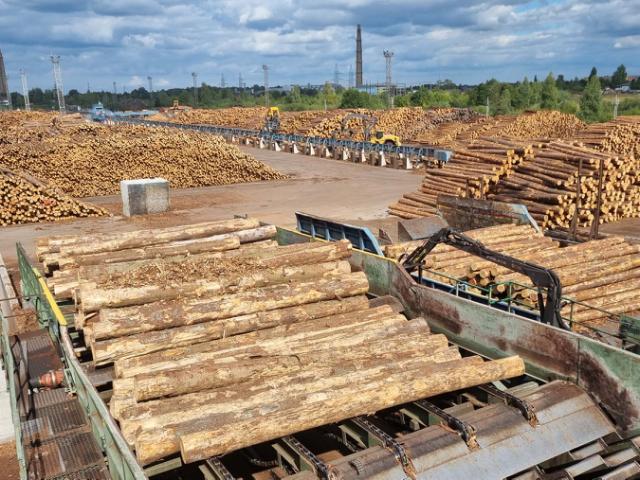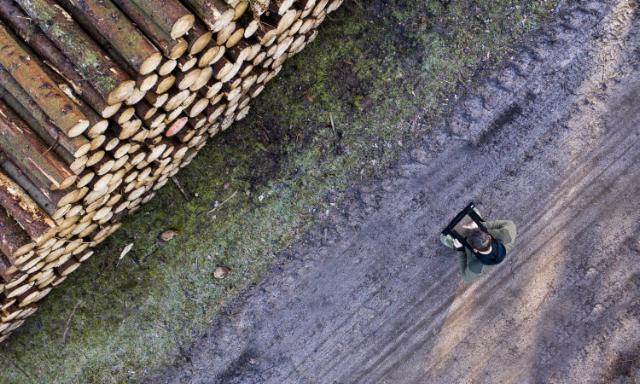Customer story
Investing with vision: Why an investment advisor bets on forests

For the past 30 years, Gustav D. Lassen has advised both private individuals and financial institutions on investing in equities. His own investment portfolio includes, among other things, Baltic forestland—a key component due to its diversification benefits, annual growth, and the opportunity to work with a Danish partner.
With a career that includes positions at Credit Lyonnais and Merrill Lynch in London, Head of Institutional Equity Sales at Nordea Denmark, Managing Partner at ABGSC, and now an investment advisor at Investering & Tryghed, Gustav D. Lassen has built a career around helping others invest their wealth wisely.
According to him, success as an investor isn’t just about reading and understanding numbers — though that certainly helps:
- Stock prices reflect expectations of future earnings. And expectations tend to change over time. That’s why it’s important for investors to ask themselves a few key questions. For example: Am I being compensated for the risk I’m taking?
- I’ve found that forests are a long-term investment where patience is key. My investment has yielded a stable return of 8 to 10%, which I consider conservative but reliable. It was especially important to me that I wasn’t just investing in numbers, but in something living. I see myself as a steward of the land—something that must be preserved for future generations.
"I started investing in forests to diversify my portfolio and reduce my dependence on stocks and bonds."
Gustav D. Lassen
A feel for the forest
His Danish partner is Dalgas, owned by Hedeselskabet, which helps investors find and purchase forestland in Estonia, Latvia, and Lithuania, and then manages the forest according to the investor’s wishes.
Although he only visits his Latvian forest two or three times a year, Gustav D. Lassen emphasizes that forest investment comes with a broader sense of responsibility:
- As a long-term investor, you’re not just the owner of a forest property — you’re also a caretaker of a piece of nature that’s been part of a local community for centuries. That requires you to act responsibly.
"It was crucial for me to be able to call someone who spoke Danish when I was entering unfamiliar territory. At the same time, I’ve been able to leave the forest management entirely to Dalgas once we agreed on a long-term plan. Over time, I’ve developed a close and trusting relationship with the local foresters, so I don’t need to spend much time managing my investment."
Gustav D. Lassen
A risk you can relate to
- If you do your homework and choose forestland in an area with sufficient rainfall and good soil drainage, trees will grow regardless of the broader economy. As an investor, you can simply let the trees stand for a year or two if timber prices drop. Wood is storable. If you have a long-term investment plan, forests provide stable returns and are a great way to diversify a portfolio, says Gustav D. Lassen.
Forest investment isn’t geographically limited to the Baltic states, but in 2000, Gustav D. Lassen chose Latvia for one simple reason: more forest for the money and the ability to register ownership.
- At the time, I believed it was highly likely that the Baltic countries would aim to grow their economies, promote traditional industries, and eventually become integrated with Scandinavia — as they historically have been. I still believe that’s the main scenario for the region. I considered other countries, but the combination of lower prices and Latvia’s orientation toward Scandinavia and the EU made the decision for me. Timber can be sold at the same market prices as in Europe, and today the infrastructure and forest industry are on par with other countries. Moreover, Latvian forestland is still significantly cheaper than comparable land in Sweden.
.jpg&width=640&format=webp&quality=75)
Estonia, Latvia, and Lithuania are all EU members and have joined both the eurozone and NATO since Gustav D. Lassen’s initial investment.
According to him, this is one of the reasons why forests remain attractive to investors. Add to that the still-low prices, low interest rates, and generally low-cost levels in the Baltics, and you have compelling arguments for why forest as an asset class is both interesting and a sensible way to diversify a portfolio:
- For me, a long-term approach is essential. Forests keep growing even when stock markets fluctuate. A forest investment offers not only diversification but also a stable asset that appreciates over time. Trusting an experienced partner with local expertise was crucial for me.
Other customer stories from our clients and partners
.jpg&width=640&format=webp&quality=75)
Baden-Württemberg introduces LogStackLIDAR for laser measurement of raw timber
Baden-Württemberg has become the first German state to introduce our advanced app LogStackLIDAR for measuring raw timber. The system, which uses LiDAR technology, makes the measurement process both faster and more accurate.Experiences from previous investor field trips to the Baltics
Dalgas has been managing forests in the Baltics since 1998. For a quarter of a century, the company has managed forests for several Danish and international investors from three offices in Estonia, Latvia, and Lithuania.
HessenForst has streamlined and certified its round timber measuring using LogStackPro
A potential wait of several days has been reduced to a few seconds' efficient computer calculations at HessenForst, the forestry department in the German federal republic of Hessen.Related services

Forest investments
Secure investment in forests in Estonia, Latvia, and Lithuania, where you get hassle-free management and a flexible collaboration with our experienced experts.Hedeselskabet – partnering with nature
Dalgas is part of Hedeselskabet – founded in 1866 and still growing. Hedeselskabet is an association of people working for a sustainable future. And who have the necessary knowledge and experience to lead the way.
Hedeselskabet supports
Working for a sustainable future requires resources. Hedeselskabet participates in the development of nature and the environment, and we take responsibility. Therefore, we allocate funds to relevant development projects and member-driven projects, as well as award scholarships. For the benefit of all of us – now and in the future.

